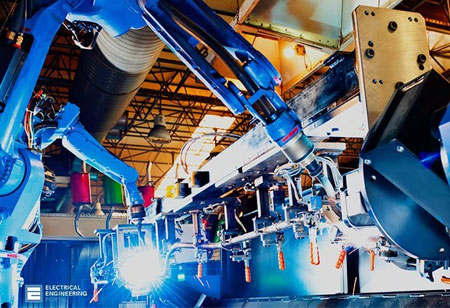THANK YOU FOR SUBSCRIBING
Simple steps to Designing Products for an Automated Manufacturing Industry
In automation, the robot will be doing the job of assembling a product. Hence, the design considerations should be made with robotic capabilities in mind rather than human capacities.

By
Apac CIOOutlook | Wednesday, June 12, 2019
Stay ahead of the industry with exclusive feature stories on the top companies, expert insights and the latest news delivered straight to your inbox. Subscribe today.
FREMONT, CA: Industries are heading towards automation at a steady rate. It won’t be long before completely automated manufacturing plants are a reality. Automation requires specific design considerations for the products. If products are designed following a particular framework, automating their production process become hassle-free and cost-effective. Necessarily, a company must follow a set of simple rules to ensure that their product is ready for the changes that might happen in the future.
• Looking at Products from the Perspective of a Robot
In automation, the robot will be doing the job of assembling a product. Hence, the design considerations should be made with robotic capabilities in mind rather than human capacities. The product should be so designed such that robotic arms and additional tools can handle the parts and accessories of the products conveniently.
• Camera-based Inspection for Products
During the process of product inspection, cameras carry out many essential functions like reading barcodes on products, locating parts and detecting defects. Hence, engineers should design the product so that robots can access important information without having to move around too much.
Check Out : The Manufacturing Outlook
• Making OTS Parts a Part of Automation
Off the Shelf (OTS) parts are often the endpoint in product manufacturing. While making products automation-ready, companies must consider these OTS part as well and determine if these aspects can be automated or not. The orientation of product during assembling can vary. The manner in which a product is put together can vary. While some products are assembled with parts coming in from different directions, other products are simpler to construct. Simple assembling where the orientation of the product does have to be changed is desirable while designing a product for automation.
• Incorporate all of the Rules for Packaging of the Product
The packaging is a crucial step, and one must not forget to make packaging automation-friendly. By designing the packaging for automation, the process becomes faster and allows an excellent unboxing experience for customers as well.
These simple steps can mean a lot of conveniences when the manufacturing goes robotic, and companies step into industry 4.0.
Check Out: Top Manufacturing Intelligence Companies





